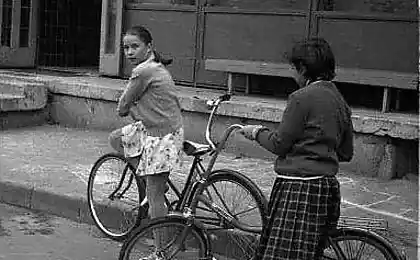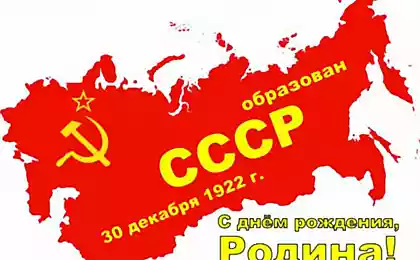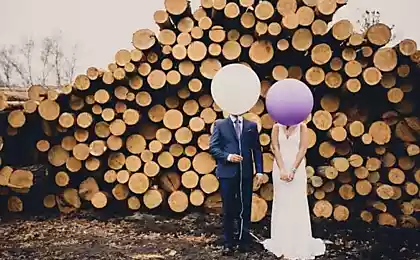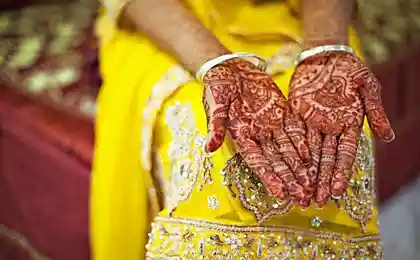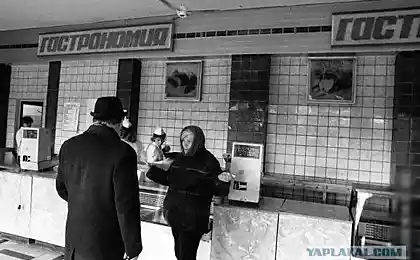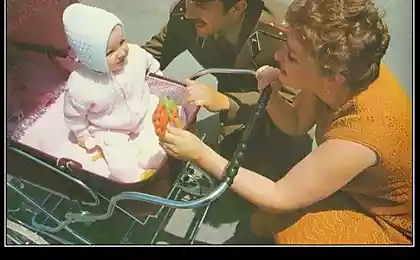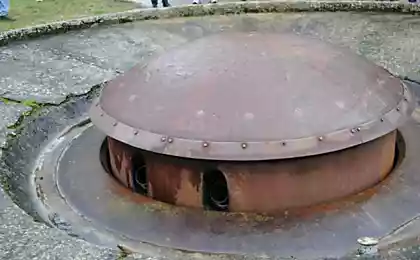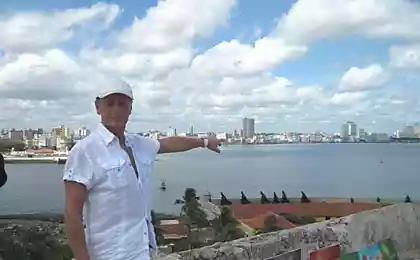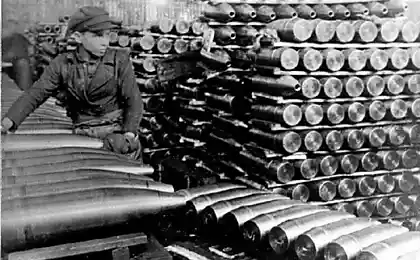1470
Interesting facts about wedding traditions in the Soviet Union
November 1, 1959 in Leningrad, in a magnificent mansion on the English Embankment, 28 (then the embankment of the Red Fleet) was the first in the USSR Wedding Palace.

The news of this event immediately spread throughout the country, which in addition to the strict registry offices did not know anything. It was very unusual and really important event for Soviet citizens ...
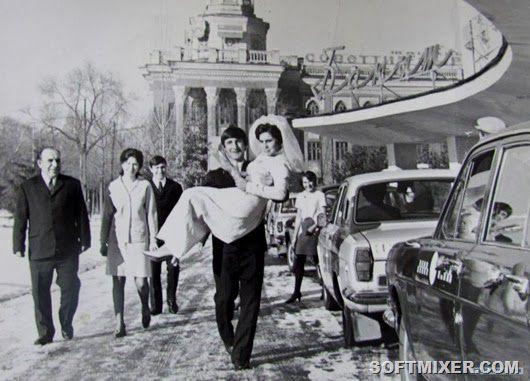
November 1, 1959 at exactly 12 noon in front of Kalashnikovs Vadim Iosifovich and Lyudmila Vasilyevna march to the sound of Mendelssohn opened the doors of the ceremonial hall of the Palace of weddings.

Everything was modest - dress without crinoline, one ring for two-and Komsomol discreet kiss. But you can imagine how happy the couple feel! Leningrad Wedding Palace or "Palace of happy" until 1917 was the mansion of the Grand Duke Andrei Vladimirovich Romanov.
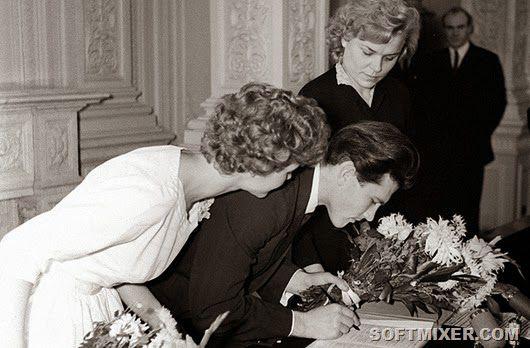
After World War II the building housed a design bureau. And the opening of the Palace of the building was decorated in befitting "Soviet" style: on a table covered with a red cloth, stood a bust of Lenin on the walls hung portraits of members of the Politburo. Above all this stood the chair, just painted red with the coat of arms of the Soviet Union.
Of course, in the country's first "Wedding Palace", many wanted to get the bride and groom.
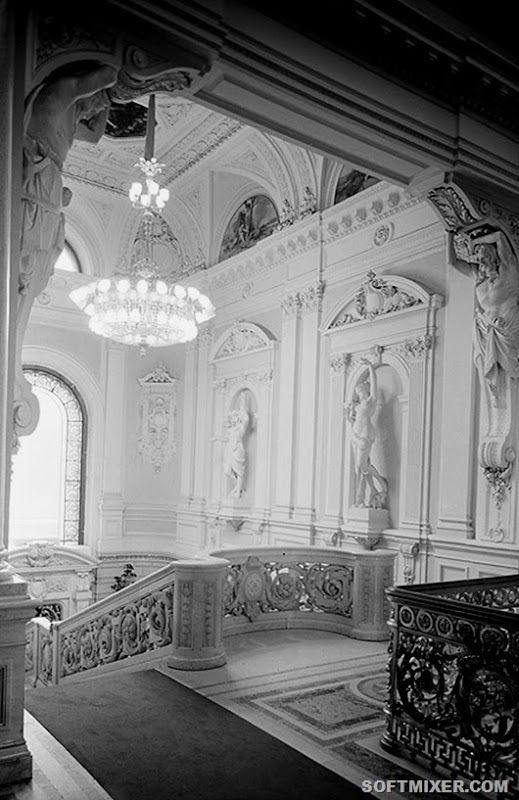
1963. According to some witnesses of weddings at the time, a visit to the Leningrad Palace with direct "participation" in the ceremony even included in the program of the visit of Finnish tourists in the northern capital.

60 years, the usual Soviet bride brought to the place of registration of marriage.
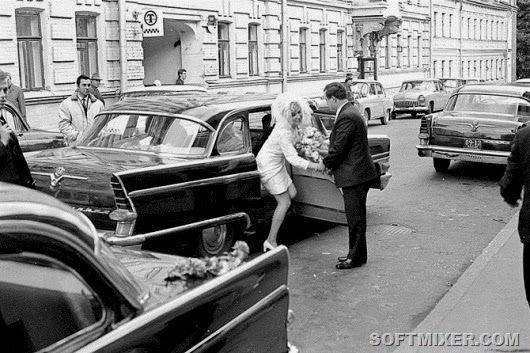
Of course, in "solemn" car - "The Seagull".
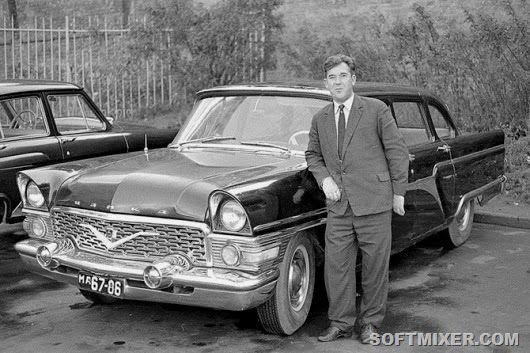
Machines are usually decorated with colored ribbons, balls, sometimes-doll. In the photo: Wedding in 1974.
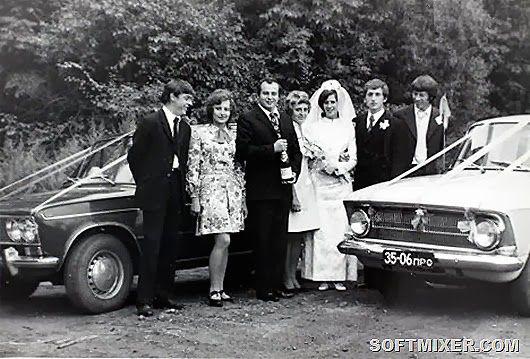
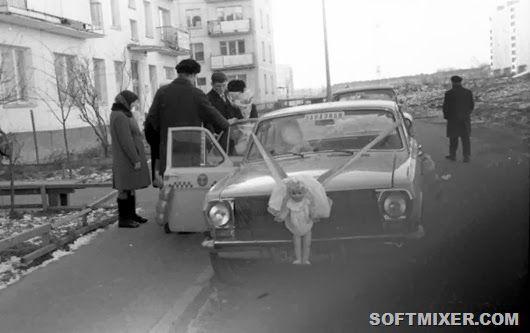
And this is a signature certificate in the average registry office.
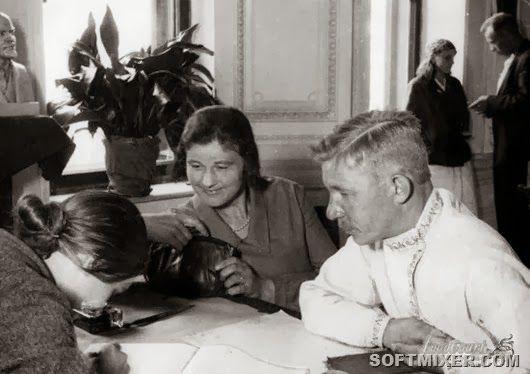
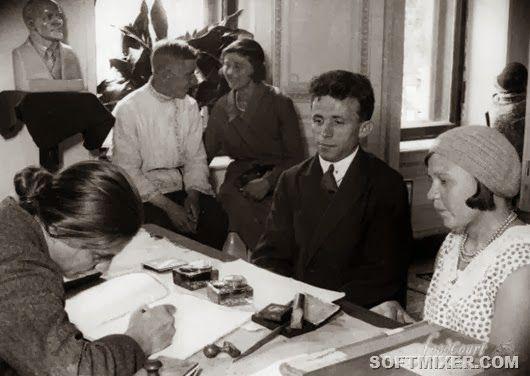
By the way, with 50 years, in order to increase the birth rate in the country, the Soviet government strongly supports the desire of citizens to formalize their relationship. In singles who want to live in a "civil marriage" and feel it imposes tax blank.
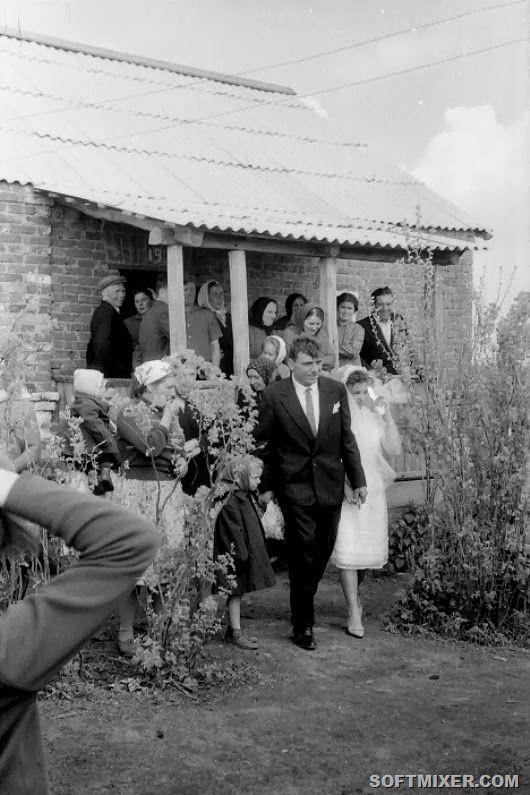
And families, on the contrary, helped: the state welcomed each new marriage, and even paid the money to buy wedding rings. Young families were on benefits and free housing.
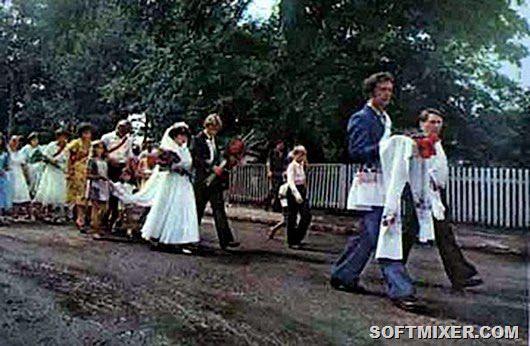

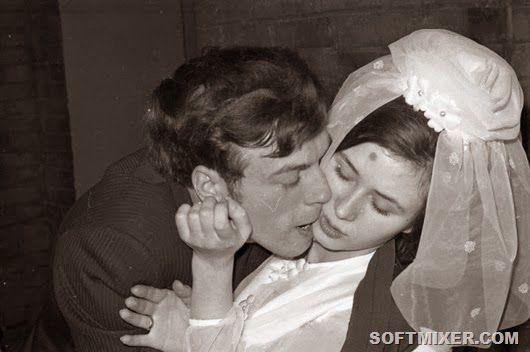
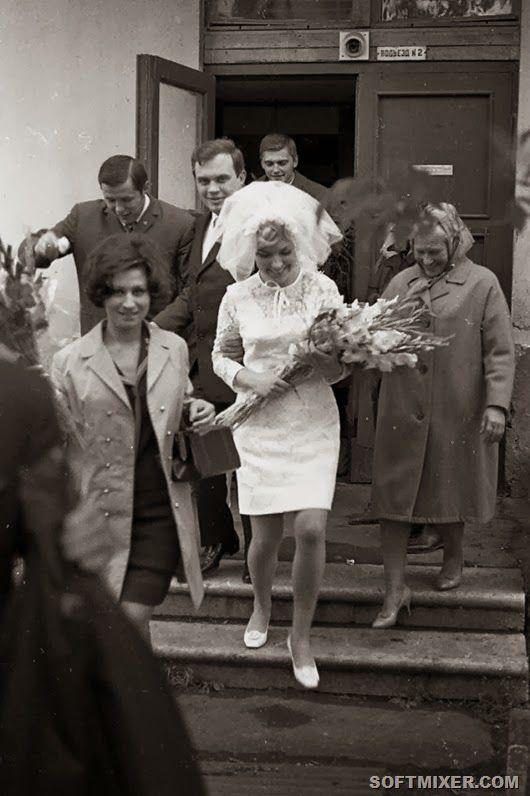
Khrushchev at the wedding of Valentina Tereshkova.

Wedding in the Ryazan region in 1965.
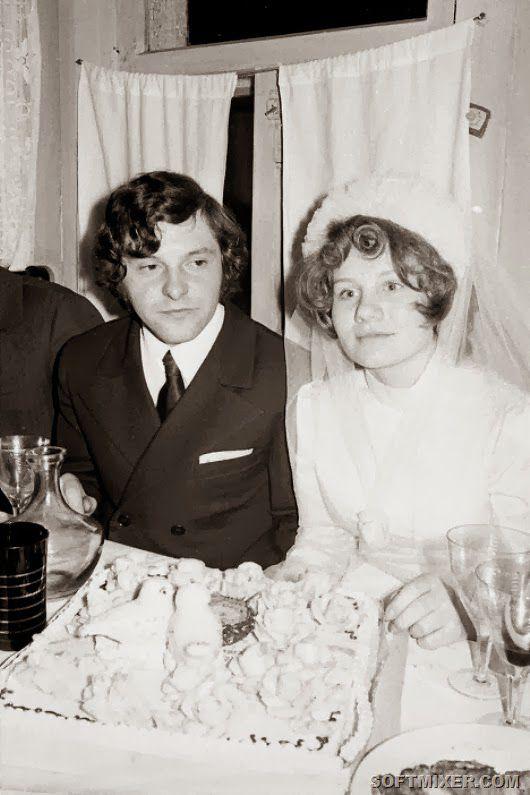
Long since she married not one, but with a dowry - property that the bride's parents started to cook almost from the day she was born. If dowry measured carts like this Kyrgyz bride, the chances of finding a good husband were high.
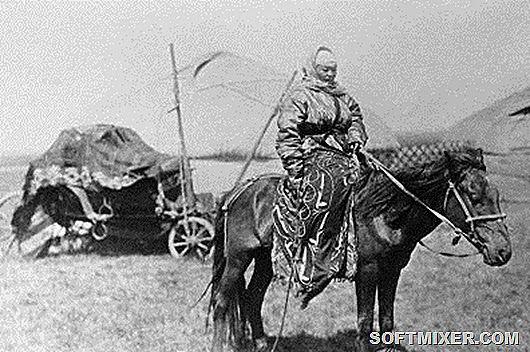
Marriage as one of the major events in the life of the newlyweds and their parents - the mass event. For the bride, shown in the photo, the envy of the farm. Indeed, in the 30s of the last century "enter" in family life on the tractor've not each.
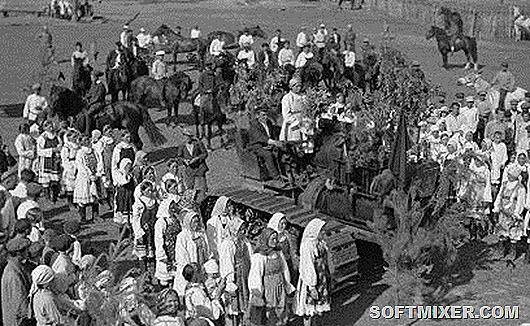
Speaking of tradition, the wedding ceremony itself, it is worth noting that despite the endemic "standardization" in the republics of the former Soviet Union retains its folk and religious customs: in Tajikistan, even 40 years after the victory of the Soviet power, no one could see the faces of the bride during the ceremony.
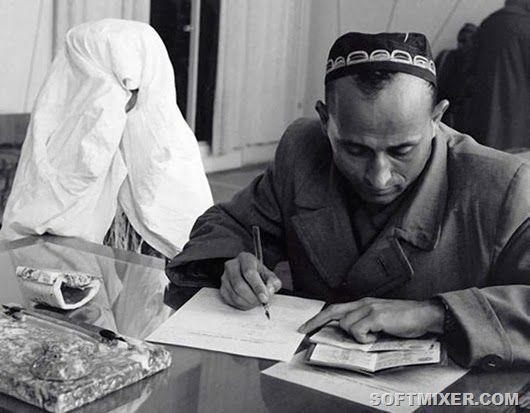
By the end of the last century of urban scenarios Tajik weddings closer to European, girls began to marry with open faces.

In some parts of the multinational Union wedding ritual she looked very bright and colorful. For example, the Georgian bride had to be able not only to stop a galloping horse, and, if necessary, to ride.

And in the Baltic States - on the contrary, the groom had to impress the bride, having washed her feet.

Many nations on the eve of the wedding the bride should not braid a plait in her maiden name but two. According to the Kyrgyz tradition, braids decorated with beads, shells and brass buttons. The ends of the braids should hang below the waist. If the length of their hair is not enough, they tied the horse hair, which append the keys.
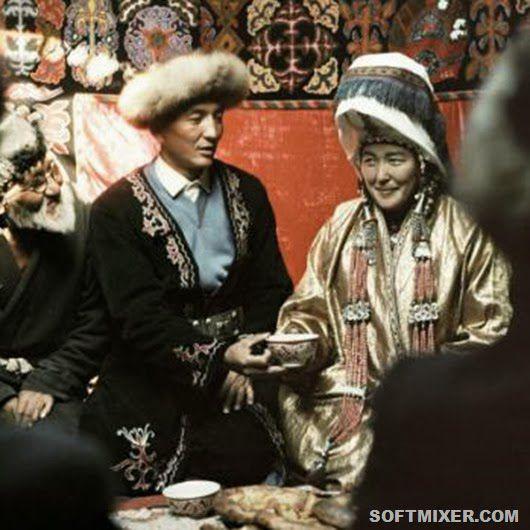
In Ukraine, according to an ancient tradition, it decided to knock on the door a special carved cane, before the couple enter the house.
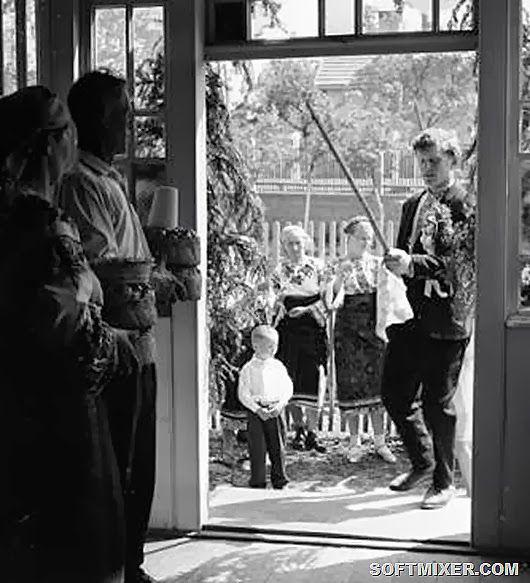
At the wedding, the bride put Nenets jump over the rope. In a heavy coat is not easy to do. But the deer graze on the tundra is not easier. The groom must be sure that his future wife cope with this task

Young people, in turn, also tried in every way to diversify a wedding: it was thought that in order to save his future wife from evil spirits, the husband should make her into the house in his arms. The builders of BAM and do, but a few other reasons - to keep the white shoes of his wife from dirt.
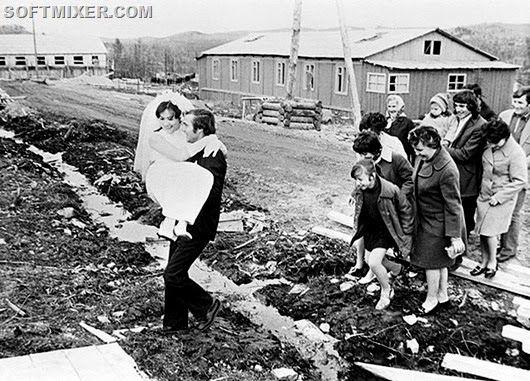



Photo Soviet wedding, made in 1977 for the magazine National Geographic.
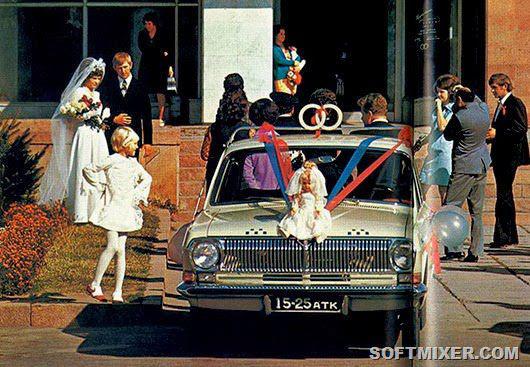
In the Slavic tradition Suite met the caravan. Who - the groom or bride - took a big bite, he will be head of the family
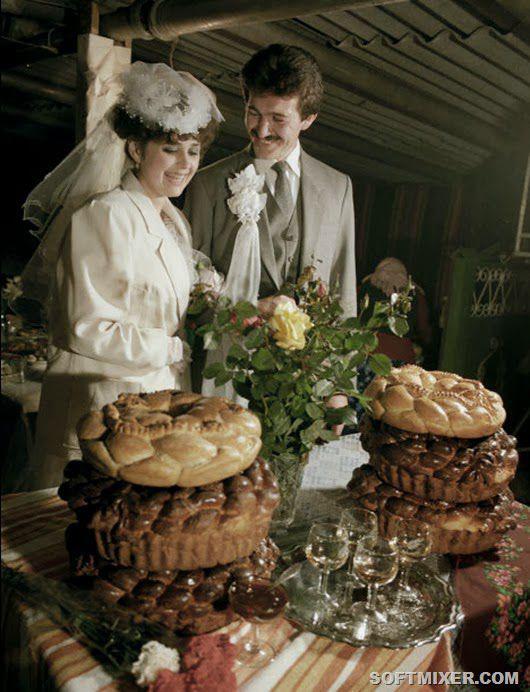
After the solemn marriage usually went with flowers at the monument to Lenin, to the Eternal Flame at the Kremlin area.
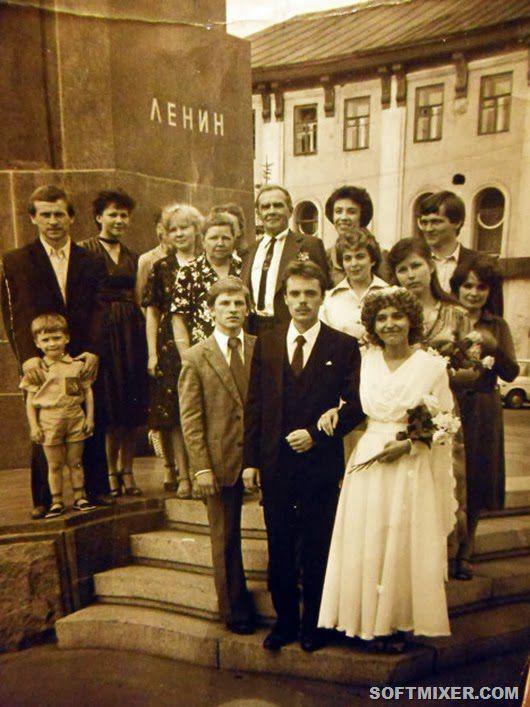
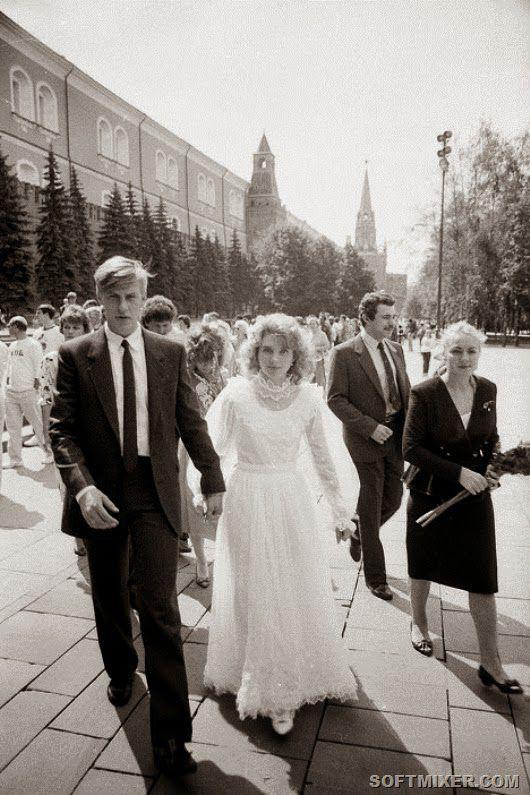
The obligatory photo shoot the newlyweds on the Red Square in Moscow.
An interesting detail of the "marriage" terminology denote cohabitation "civil marriage" is relatively recent. In Soviet times, he called civil marriage marriage recorded in the civil status registry office (hence the name came ...). Basically in the USSR were only two types of marriage: civil and church ...

In order not to get confused during the last census in Russia have introduced the notation of two types of marriages: "civil" and "official».
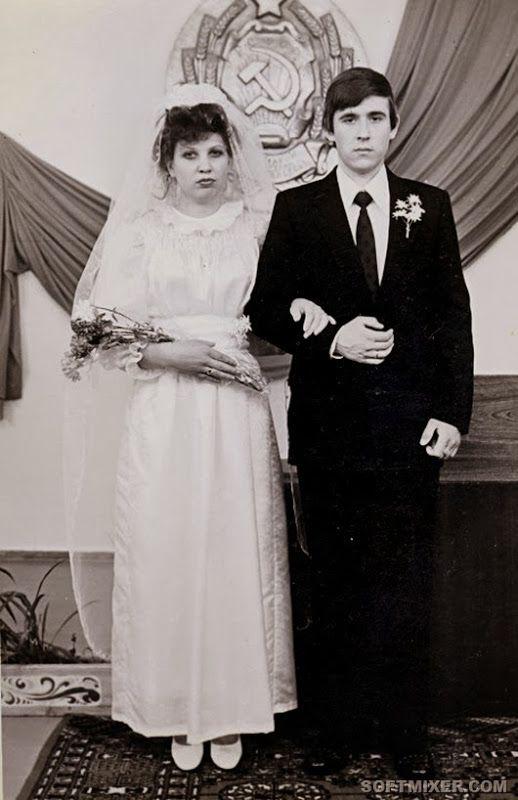
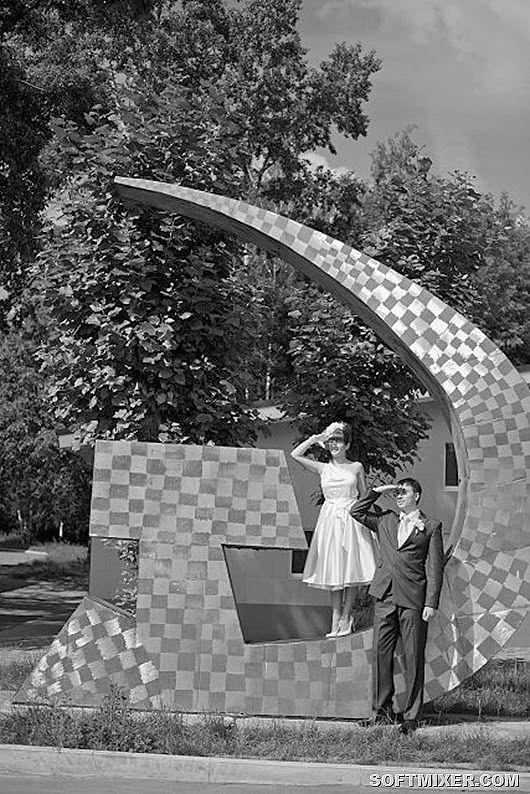
Source: jurashz.livejournal.com

The news of this event immediately spread throughout the country, which in addition to the strict registry offices did not know anything. It was very unusual and really important event for Soviet citizens ...

November 1, 1959 at exactly 12 noon in front of Kalashnikovs Vadim Iosifovich and Lyudmila Vasilyevna march to the sound of Mendelssohn opened the doors of the ceremonial hall of the Palace of weddings.

Everything was modest - dress without crinoline, one ring for two-and Komsomol discreet kiss. But you can imagine how happy the couple feel! Leningrad Wedding Palace or "Palace of happy" until 1917 was the mansion of the Grand Duke Andrei Vladimirovich Romanov.

After World War II the building housed a design bureau. And the opening of the Palace of the building was decorated in befitting "Soviet" style: on a table covered with a red cloth, stood a bust of Lenin on the walls hung portraits of members of the Politburo. Above all this stood the chair, just painted red with the coat of arms of the Soviet Union.
Of course, in the country's first "Wedding Palace", many wanted to get the bride and groom.

1963. According to some witnesses of weddings at the time, a visit to the Leningrad Palace with direct "participation" in the ceremony even included in the program of the visit of Finnish tourists in the northern capital.

60 years, the usual Soviet bride brought to the place of registration of marriage.

Of course, in "solemn" car - "The Seagull".

Machines are usually decorated with colored ribbons, balls, sometimes-doll. In the photo: Wedding in 1974.


And this is a signature certificate in the average registry office.


By the way, with 50 years, in order to increase the birth rate in the country, the Soviet government strongly supports the desire of citizens to formalize their relationship. In singles who want to live in a "civil marriage" and feel it imposes tax blank.

And families, on the contrary, helped: the state welcomed each new marriage, and even paid the money to buy wedding rings. Young families were on benefits and free housing.




Khrushchev at the wedding of Valentina Tereshkova.

Wedding in the Ryazan region in 1965.

Long since she married not one, but with a dowry - property that the bride's parents started to cook almost from the day she was born. If dowry measured carts like this Kyrgyz bride, the chances of finding a good husband were high.

Marriage as one of the major events in the life of the newlyweds and their parents - the mass event. For the bride, shown in the photo, the envy of the farm. Indeed, in the 30s of the last century "enter" in family life on the tractor've not each.

Speaking of tradition, the wedding ceremony itself, it is worth noting that despite the endemic "standardization" in the republics of the former Soviet Union retains its folk and religious customs: in Tajikistan, even 40 years after the victory of the Soviet power, no one could see the faces of the bride during the ceremony.

By the end of the last century of urban scenarios Tajik weddings closer to European, girls began to marry with open faces.

In some parts of the multinational Union wedding ritual she looked very bright and colorful. For example, the Georgian bride had to be able not only to stop a galloping horse, and, if necessary, to ride.

And in the Baltic States - on the contrary, the groom had to impress the bride, having washed her feet.

Many nations on the eve of the wedding the bride should not braid a plait in her maiden name but two. According to the Kyrgyz tradition, braids decorated with beads, shells and brass buttons. The ends of the braids should hang below the waist. If the length of their hair is not enough, they tied the horse hair, which append the keys.

In Ukraine, according to an ancient tradition, it decided to knock on the door a special carved cane, before the couple enter the house.

At the wedding, the bride put Nenets jump over the rope. In a heavy coat is not easy to do. But the deer graze on the tundra is not easier. The groom must be sure that his future wife cope with this task

Young people, in turn, also tried in every way to diversify a wedding: it was thought that in order to save his future wife from evil spirits, the husband should make her into the house in his arms. The builders of BAM and do, but a few other reasons - to keep the white shoes of his wife from dirt.




Photo Soviet wedding, made in 1977 for the magazine National Geographic.

In the Slavic tradition Suite met the caravan. Who - the groom or bride - took a big bite, he will be head of the family

After the solemn marriage usually went with flowers at the monument to Lenin, to the Eternal Flame at the Kremlin area.


The obligatory photo shoot the newlyweds on the Red Square in Moscow.
An interesting detail of the "marriage" terminology denote cohabitation "civil marriage" is relatively recent. In Soviet times, he called civil marriage marriage recorded in the civil status registry office (hence the name came ...). Basically in the USSR were only two types of marriage: civil and church ...

In order not to get confused during the last census in Russia have introduced the notation of two types of marriages: "civil" and "official».


Source: jurashz.livejournal.com
